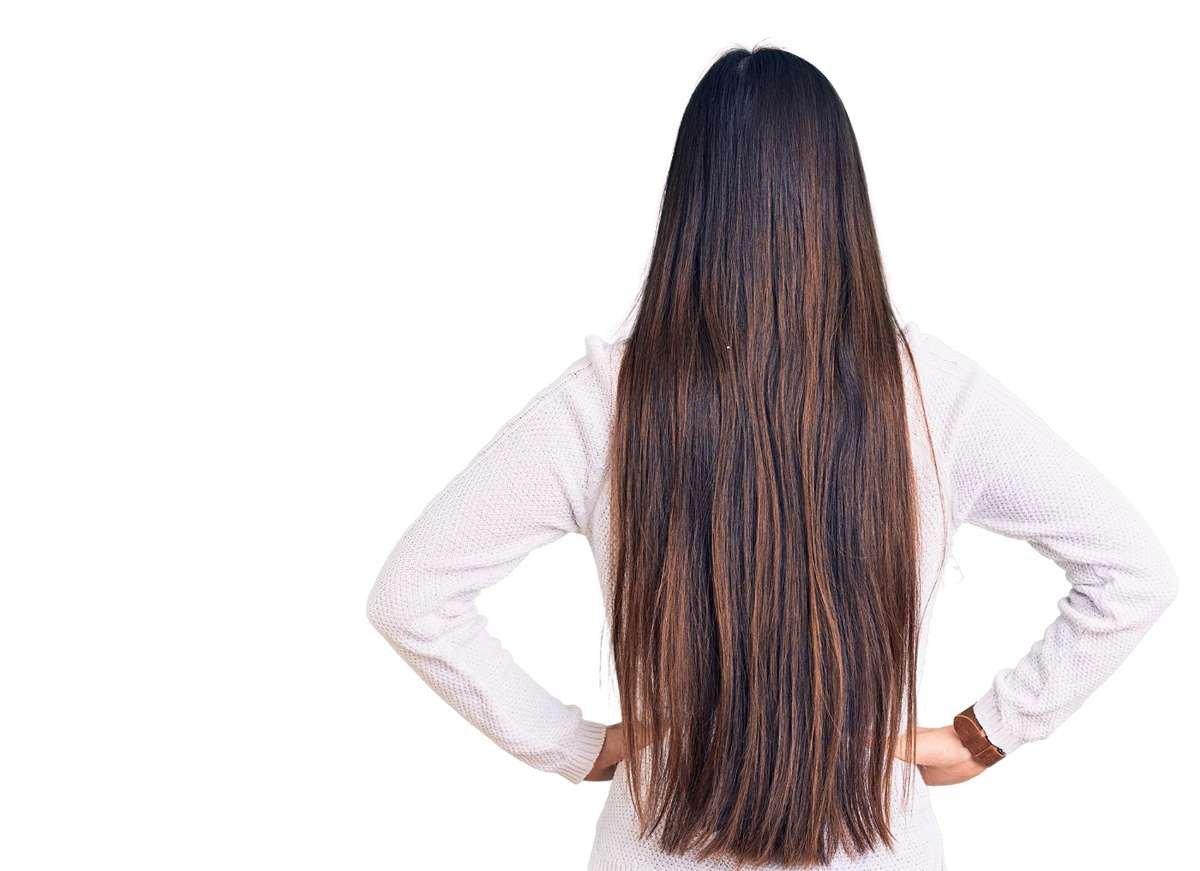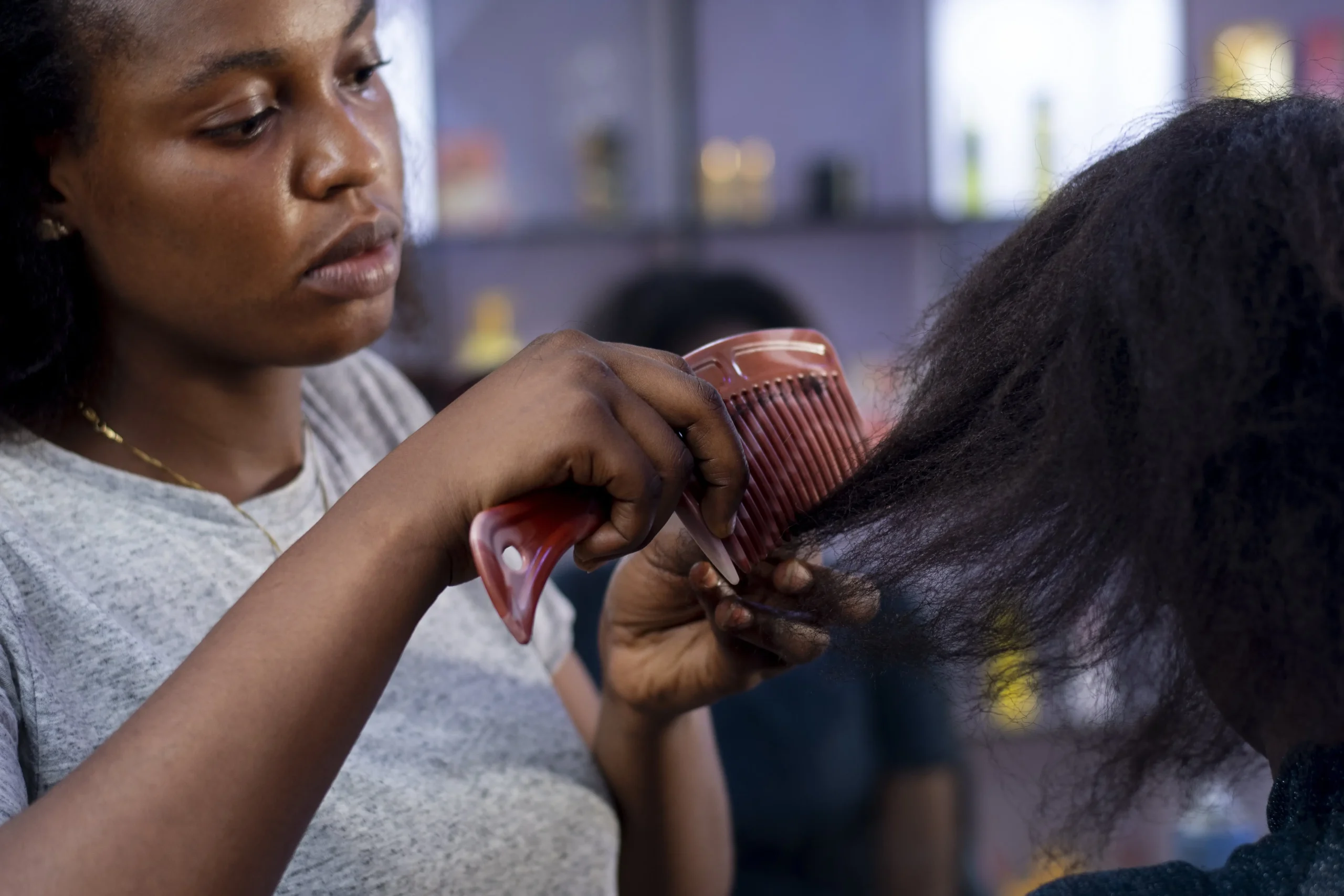
Yes, you can dye a synthetic wig but it’s not exactly like coloring your real hair at the salon. Synthetic wigs are made from plastic-like fibers, which don’t soak up regular hair dye the same way. That means you’ll need to get a little creative.
It’s not super hard, but you do have to follow a few specific steps — and pick the right method. Here’s a quick peek at the different ways people do it:
- Fabric dyes (like Rit DyeMore) using boiling water
- Acrylic ink mixed with alcohol in a spray bottle
- Sharpie markers for streaks or soft ombré
- Fabric spray paint for fast, even color
- Tools like gloves, wig stands, old towels, and cold water
What You Need to Know Before You Start
Synthetic Hair vs Human Hair – What’s the Deal?
Alright, let’s clear this up first synthetic wigs and human hair wigs are totally different things. Human hair wigs are, well, made from real hair, so they can be dyed, heat styled, and treated just like your own.
But synthetic wigs? They’re made from plastic-like fibers usually polyester or acrylic — and they don’t absorb dye the same way real hair does. That’s why if you try to dye synthetic hair with regular box dye, it just won’t work. The color won’t stick, and worse, it could ruin your wig.
So, when we’re talking about dyeing a synthetic wig, we’ve gotta use different tricks to get the color in and to make sure the wig doesn’t melt or get all funky.
Will Any Dye Work on Synthetic Wigs?
Nope not every dye is gonna work here.
The biggest mistake people make? Trying to use regular hair dye on synthetic wigs. It simply doesn’t work. That stuff is made for human hair, which has a totally different structure. Synthetic fibers won’t absorb it, and you’ll just waste your time and money.
Instead, here’s what actually works:
- Fabric dyes (like Rit DyeMore) — especially made for synthetic materials
- Acrylic ink + alcohol spray — for layering color or making streaks
- Alcohol-based dyes — quick-drying and good for light touch-ups
One more thing results vary depending on the color of your wig. A blank canvas (a white or super light wig) is the easiest to dye and gives you brighter, more vibrant hair results. Dark-colored wigs? They’re trickier, and some methods may not even show up at all unless you lighten them first (which, spoiler alert, is almost impossible with synthetic).
4 Easy Ways to Dye a Synthetic Wig (With Pros & Cons)

Let’s break it down there isn’t just one way to color a synthetic wig. Depending on what you’ve got on hand (and how much mess you’re okay with), here are four popular methods people use to get those vibrant results without ruining the wig.
1. Fabric Dye + Boiling Water Method
This one’s probably the most popular especially for full-color changes.
What You’ll Need
- Fabric dyes like Rit DyeMore (made for synthetics)
- A big pot (you won’t use it for food again)
- Tongs or a spoon
- Gloves (unless you like red hands)
- Old towel
- Cold water for rinsing
How to Do It (Quick Steps):
- Fill your pot with water and bring it almost to a boil (not too hot!).
- Add the fabric dye and stir well.
- Place your wig (already brushed and clean) into the pot using tongs.
- Move it around gently so the fibers evenly apply the dye.
- Let it soak for about 10–15 minutes, then carefully take it out.
- Rinse it with cold water until it runs clear.
- Air dry no hair dryers here!
Warnings:
- Too much heat can melt the wig fibers.
- Don’t ever use a heat styling tool on a freshly dyed wig — or at all, really.
- Always test on a small section if you’re nervous.
Best for: Full wig color changes on light wigs
Not great for: Heat-sensitive wigs or dark-color wigs
2. Acrylic Ink in a Spray Bottle

If you want ombré vibes, cool pastels, or streaky effects, this one’s fun and kinda artsy.
How It Works
You’ll need acrylic ink and rubbing alcohol. Mix them in a spray bottle (roughly 1 part ink to 2 parts alcohol). Shake it up real good.
Then, hang your wig up and start spraying. Use gloves unless you’re cool with smurf fingers. The alcohol helps the ink stick and dry quickly.
Pros
- Cheap
- Custom color mixing
- Great for adding vibrant hair touches
- Fun to play with
Cons
- Can be messy
- Smells strong
- Dries fast, so you’ve gotta work quickly
This method is great if you just want to dye a synthetic wig in parts or create multi-color looks.
3. Sharpie Method
Yup markers. Sounds wild, but people do it, especially for cosplay or quick touch-ups.
Here’s how:
- Pull the ink tube from inside the marker and soak it in rubbing alcohol.
- Use the liquid to “paint” the wig or put it in a spray bottle like the ink method.
Works best on light-colored wigs, since the color won’t show much on dark ones.
Bonus tip: It smells kinda gross while it’s drying, but the result? Not bad if you’re on a budget.
Best for: Beginners, small areas, custom streaks
Not great for: Full coverage, dark wigs, long-term use
4. Fabric Spray Paint
If you’re in a hurry or just want something quick, this is your method.
Buy a can of fabric spray paint (make sure it says it works on synthetics), hang your wig somewhere safe, and spray evenly.
No boiling, no dye mixing, no crazy tools.
Pros
- Super fast
- Dries quickly
- Easy to air dry
Cons
- Not long-lasting
- Can feel stiff or crunchy
- Might rub off on clothes if not sealed
Great for costumes, parties, or one-time wear — just don’t expect salon results.
Step-by-Step: How to Dye Your Synthetic Wig Safely

So you’ve picked your method awesome. Now let’s walk through the full dyeing process step-by-step, so you don’t accidentally fry your wig or end up with streaky patches. This part’s easy if you’re careful and take your time.
What You’ll Need
Before you start, grab everything you need and set up your space. You don’t wanna be running around mid-dye with purple hands.
- A wig stand or hanger
- A pair of gloves (your hands will thank you)
- A couple of old towels for messes
- Old clothes — trust me, things will get messy
- A spray bottle, pot, or brush — depending on your method
- A completely dry wig before starting (super important!)
- Access to a sink for a cold water rinse
Prep the Wig
Prepping your wig is like priming a wall before painting. If you skip it, your color won’t go on evenly.
- Brush it out gently — get rid of tangles and dust
- If it’s dirty or oily, wash it first with gentle fabric-friendly soap
- Lay it flat or hang it to dry
- Make sure it’s completely dry before moving to the next step — water and dye don’t mix well on synthetic fibers
Apply the Dye
Now comes the fun part. Whether you’re spraying, dipping, or brushing — go slow and steady.
- If you’re using the boiling method, use tongs and stir the wig gently
- For sprays or inks, apply the dye evenly and let each layer soak in
- Use gloves and cover the surface you’re working on
- Be gentle — tugging or rough brushing can pull out the fibers
- Depending on your method, you might need to let it sit for 15–30 minutes for the color to fully bond
This dyeing process is more about patience than perfection — don’t rush it, and don’t overdo it with dye. You can always add more, but you can’t take it off.
Rinse and Dry
Almost done!
- Rinse the wig in cold water until the water runs clear. This helps seal the color and washes away excess dye.
- Do not use hot water — and seriously, never toss a synthetic wig under a blow dryer or use heat styling tools right after dyeing. It can melt or warp the fibers.
- Once rinsed, gently pat it with a towel and place it on the wig stand to air dry completely. Don’t brush it while wet — wait until it’s fully dry.
What Happens After? Tips to Keep the Color Looking Fresh

So your synthetic wig is dyed and dried — now what? Well, if you want that new color to last more than a weekend, there are a few simple things you should do. Here’s a quick breakdown:
| Care Step | What to Do | Why It Matters |
| Washing Your Dyed Wig | Use a sulfate-free or fabric-safe shampoo. Always wash gently — no rough scrubbing or twisting. | Sulfates and harsh scrubbing can strip the color and damage the fibers. |
| Rinse Smart | Stick to cold water only when rinsing. | Cold water helps lock in color and protects the wig from fiber melt. |
| Let It Air Dry | Never use heat styling tools on your dyed wig. Always air dry. | Heat can warp synthetic fibers and make the color fade faster. |
| Store the Right Way | Keep your wig out of direct sunlight and away from heat. | Sunlight fades color and can dry out the fibers. |
| Use Wig Tools | Place the wig on a wig stand or store it with a wig cap when not in use. | Helps maintain shape and protects from tangles or damage. |
| Brush Carefully | Brush gently — don’t yank or tug. Use a wide-tooth comb or wig brush. | Harsh brushing can loosen fibers and dull the color over time. |
Following these easy steps will help keep your color looking vibrant, your wig in good shape, and your effort totally worth it.
Real Talk: Is It Worth It?
Okay, let’s be real for a sec dyeing a synthetic wig can be fun, creative, and way cheaper than buying a brand-new one. But is it actually worth it?
Sometimes, yes. If you already have a light-colored wig, some fabric dyes or acrylic ink can give it a cool new look without spending much. It’s a great option if you love DIY, cosplay, or just want to try something different for a party.
But also? Not gonna lie — it can get messy. The color might not turn out exactly how you imagined, and if your wig is dark or heat-sensitive, it might not take the dye well at all. Some methods (like fabric spray paint or Sharpies) can be a bit unpredictable.
Look, I tried the Sharpie thing once… it was fun, but kinda chaotic. The color was cool for a day, but my hands were blue, and the smell didn’t go away for hours.
So When Should You Dye vs Buy?
Dye it if:
- You already have the wig and want to experiment
- You’re okay with “pretty good” instead of “perfect”
- You enjoy DIY projects and don’t mind a little trial-and-error
Buy a new one if:
- You need a specific, professional look
- Your wig is super dark or low quality
- You’re in a rush and don’t want to risk a dye disaster
Things Most People Don’t Tell You (But You Should Know)

Alright, time for the behind-the-scenes stuff no one talks about — but you really need to know before diving into the dyeing process. These aren’t deal-breakers, but they can save you a ton of frustration (and cleanup).
Hot Water Can Melt Your Wig
Yup, synthetic wigs can melt if the water’s too hot, especially if you’re using the boiling method with fabric dyes. You don’t want boiling bubbles; you want just below boiling. If the wig starts to feel sticky or limp, it’s already too hot. Be careful!
Some Dyes Will Stain Everything
Not joking — acrylic ink, Sharpie dye, even fabric spray paint can stain your sink, your counter, your hands, your cat (okay, hopefully not). Wear gloves, use old towels, and don’t even think about doing this on your nice kitchen table.
Use Plastic Sheets or Garbage Bags
Lay them down wherever you’re working. It protects your floor, your furniture, and your nerves. Trust me — wiping purple dye off your tiles at 10 p.m. isn’t fun.
FAQ’S
1. What is the best hair dye for synthetic hair?
The best dye for synthetic hair is fabric dye made for synthetics, like Rit DyeMore. It sticks well to plastic fibers without damage. Avoid regular box dyes — they don’t work.
2. Will permanent hair dye work on synthetic hair?
Nope! Permanent hair dye is made for human hair, not plastic fibers. It won’t absorb, and trying it might damage the wig instead.
3. How to temporarily dye a synthetic wig?
You can use fabric spray paint, acrylic ink, or Sharpie alcohol mixes for temporary results. These wash out faster and are great for quick looks or costumes.
4. What should you not do with a synthetic wig?
Don’t use hot tools, boiling water, or regular hair dye. Avoid scrubbing too hard and never blow dry it — heat can melt the fibers.
5. How to change the color of a synthetic wig?
Use fabric dye, acrylic ink spray, or Sharpie dye depending on the color and material. Always test on a small spot first to avoid surprises.
6. What’s the difference between regular dye and synthetic dye?
Regular hair dye is for human hair and won’t stick to plastic fibers. Synthetic dye (like fabric dye) is made for things like polyester — perfect for wigs.
7. What are the disadvantages of synthetic hair dye?
It can be messy, may fade over time, and isn’t as vibrant on dark wigs. Some methods can also damage your wig if you’re not careful.
8. Can I bleach a synthetic wig before dyeing it?
Nope bleach does not work on synthetic wigs. It won’t lighten the color and will likely ruin the fibers.
9. How long does dyed color last on a synthetic wig?
It depends on the method, but usually a few weeks to a couple of months. With proper care, you can stretch the color longer.
10. Can I mix dye methods to get a better result?
Yes, but do it carefully. Some people use fabric dye first, then add acrylic ink streaks for extra depth. Just make sure the wig stays safe.
Conclusion
So yeah, it’s totally possible — you can dye a synthetic wig if you’ve got the right tools, patience, and method. Just remember: no regular hair dye, go easy on the heat, and always test first. If you’re up for a little DIY fun, go ahead and dye that synthetic wig. Just follow the steps and keep it safe!







